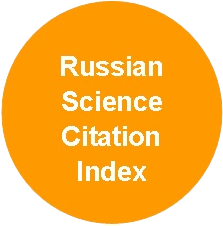Variability of Morphological and Biological Characteristics of the Diasporas of East Asian Representatives of the Maleae Tribe Cultivated in the Subarctic Region
DOI:
https://doi.org/10.37482/0536-1036-2025-5-198-211Keywords:
introduction, Maleae Small, East Asian flora, variability, fruit weight, seed weight, seed qualityAbstract
A comprehensive analysis of the variability of morphological and biological characteristics of the diasporas of East Asian representatives of the Maleae Small (Rosaceae) tribe, introduced and cultivated in the conditions of the subarctic region, has been carried out at the Dengrological Garden named after I.M. Straronovich. The research has covered such parameters as the weight of 1,000 fruits and 1,000 seeds, the percentage of seeds yielding from fruits, and the seed quality (viability). The coefficients of variation have ranged from 8.4 to 37.2 % for the weight of 1,000 fruits, from 10.5 to 41.9 % for the weight of 1,000 seeds, from 14.9 to 98.1 % for the percentage of seed yield from fruits and from 13.7 to 71 % for quality/viability. The analysis of correlations has revealed the complex nature of intertrait relationships and significant phenotypic variability. Thus, the plum-leaved apple trea (Malus prunifolia (Willd.)) has shown a high negative correlation between fruit weight and seed yield (r = –0.51, p < 0.05). In the Siberian crab apple tree (M. baccata (L.) Borkh.) from the natural range, statistically significant positive correlations have been established between the weight of 1,000 fruits, the weight of 1,000 seeds and viability (r = 0.61–0.73, p < 0.05), whereas in specimens from the secondary range these relationships are absent or insignificant. For the crab apple tree samples from the Perm Botanical Garden, a stable positive correlation has been established between seed weight and their quality (r = 0.72–0.84, p < 0.05). Overall, the weight of 1,000 fruits and the percentage of seed yield from fruits show predominantly week or negative correlations (r = –0.59–0.38). The results obtained emphasize the necessity for a comprehensive and direct assessment of the quality of seed material when performing introduction and breeding activities. The practical significance of this research lies in ensuring effective selection and forecasting of the productivity of introduced species, which contributes to the formation of stable and productive populations of woody plants in the climatic conditions of the subarctic region.
Downloads
References
Андреева Н.В., Гурьянова Ю.В., Десятникова Е.В. Влияние абиотических факторов на урожайность и качество плодов яблони // Вестн. Мичуринск. гос. аграр. ун-та. 2012. No 1, ч. 1. С. 43–45. Andreeva N.V., Guryanova Y.V., Desyatnikova E.V. The Influence of Abiotic Factors on Yield and Quality of Apple Fruit. Vestnik Michurinskogo gosudarstvennogo agrarnogo universiteta = Bulletin of Michurinsk State Agrarian University, 2012, no. 1, part 1, pp. 43–45. (In Russ.).
Асимметрия взаимовыгодных отношений способствует высокому биоразнообразию // Элементы. 2006. Режим доступа: https://elementy.ru/ (дата обращения: 18.05.25). Asymmetry of Mutually Beneficial Relationships Promotes High Biodiversity. Elements, 2006. (In Russ.).
Атлас и онлайн-определитель растений «Плантариум». Режим доступа: https://www.plantarium.ru/ (дата обращения: 18.05.25). Atlas and Online Plant Identification Guide “Plantarium”. (In Russ.).
Бабич Н.А., Александрова Ю.В. Интродукция видов рода Crataegus L. в дендрологическом саду им. И.М. Стратоновича. Архангельск: Сев. (Арктич.) федер. ун-т им. М.В. Ломоносова, 2023. 160 с. Babich N.A., Aleksandrova Yu.V. Introduction of Species of the Genus Crataegus L. in the Dendrological Garden named after I.M. Stratonovich. Arkhangelsk, Northern (Arctic) Federal University named after M.V. Lomonosov. 2023. 160 p. (In Russ.).
База данных «Флора сосудистых растений Центральной России». М.: Институт проблем экологии и эволюции им. А.Н. Северцова РАН, 2004. Режим доступа: https://www.impb.ru/eco/ (дата обращения: 18.05.25). Database “Flora of Vascular Plants of Central Russia”. Moscow, Severtsov Institute of Ecology and Evolution, Russian Academy of Sciences, 2004. (In Russ.).
Воронкова Н.М., Холина А.Б., Журавлев Ю.Н., Сундукова Е.В. Размножение растений российского Дальнего Востока. Владивосток: Федеральный научный центр биоразнообразия наземной биоты Восточной Азии ДВО РАН, 2023. 235 с. Voronkova N.M., Kholina A.B., Zhuravlev Yu.N., Sundukova E.V. Reproduction of the Russian Far East Plants. Vladivostok, Federal Scientific Center of the East Asia Terrestrial Biodiversity, Russian Academy of Sciences (Far Eastern Branch), 2023. 235 p. (In Russ.). https://doi.org/10.25221/seeds
Вульф Е.В. Историческая география растений. История флоры земного шара. М.; Л.: АН СССР, 1944. 286 с. Vulf E.V. Historical Geography of Plants. History of the Earth’s Flora. Moscow, Leningrad, USSR Academy of Sciences Publ., 1944. 286 p. (In Russ.).
Иванова Е.В., Сорокопудов В.Н. Морфологические особенности видов рода Malus (L.) Mill. при интродукции в условиях Белгородской области // Соврем. проблемы науки и образования. 2014. No 3. С. 630. Ivanova E.V., Sorokopudov V.N. Morphological Features of Types of Sort Malus (L.) Mill. at Introduction in Conditions of the Belgorod Area. Sovremennye problemy nauki i obrazovaniya = Modern Problems of Science and Education, 2014, no. 3, p. 630. (In Russ.).
Коляда Н.А. Древесные растения флоры Северной Америки в озеленении юга Дальнего Востока России // История и перспективы интродукции растений в России: сб. тез. Всерос. науч. конф. СПб., 2023. С. 31. Kolyada N.A. Woody Plants of North American Flora in the Greening in the South Far East of Russia. Istoriya i perspektivy introduktsii rastenij v Rossii: Collection of Abstracts of the All-Russian Scientific Conference. St. Petersburg, 2023, p. 31. (In Russ.).
Конопленко А. Морфология плодов и семян у некоторых представителей рода Malus Mill. // Журн. исследований местных и чужеродных растений. 2021. С. 148–155. Konoplenko A. Morphology of Fruits and Seeds in Some Representatives of the Genus Malus Mill. Zhurnal issledovanij mestnykh i chuzherodnykh rastenij = Journal of Naitve and Alien Plant Studies, 2021, pp. 148–155. (In Russ.). https://doi.org/10.37555/2707-3114.1.2021.247567
Лавриненко Ю.В. Эколого-биологическая характеристика и современное состояние восточноазиатских древесных интродуцентов в условиях Северо-Осетинской наклонной равнины: автореф. дис. ... канд. биол. наук. Ставрополь, 2006. 23 с. Lavrinenko Yu.V. Ecological and Biological Characteristics and Current Status of East Asian Introduced Trees in the Conditions of the North Ossetian Sloping Plain: Cand. Biol. Sci. Diss. Abs. Stavropol, 2006. 23 p. (In Russ.).
Мамаев С.А., Горчаковский П.Л. Формы внутривидовой изменчивости древесных растений (на примере семейства сосновых на Урале). М.: Наука, 1972. 284 с. Mamaev S.A., Gorchakovskij P.L. Forms of Intraspecific Variability of Woody Plants (Using the Pine Family in the Urals as an Example). Moscow, Nauka Publ., 1972. 284 p. (In Russ.).
Мухаметова С.В. Изменчивость морфометрических и репродуктивных признаков боярышников в условиях Республики Марий Эл: дис. ... канд. биол. наук. Казань, 2019. 150 с. Mukhametova S.V. Variability of Morphometric and Reproductive Traits of Hawthorns in the Republic of Mari El: Cand. Biol. Sci. Diss. Kazan, 2019. 150 p. (In Russ.).
Платонова Е.А., Лантратова А.С., Задоркина Е.А. Восточноазиатские элементы флоры в Ботаническом саду Петрозаводского государственного университета // Hortus bot. 2016. Т. 11. Режим доступа: http://hb.karelia.ru/journal/article.php?id=2964 (дата обращения: 18.09.25). Platonova E.A., Lantratova A.S., Zadorkina E.A. Species of East Asian Flora in the Botanic Garden of Petrozavodsk State University. Hortus botanicus, 2016, vol. 11. (In Russ.). https://doi.org/10.15393/j4.art.2016.2964
Романова А.Б. Генетическая изменчивость древесных интродуцентов в условиях приарктического региона // Ботан. журн. 2015. Т. 100, No 3. С. 345–356. Romanova A.B. Genetic Variability of Woody Introducents in the Conditions of the Near-Arctic Region. Botanicheskij zhurnal = Botanical Journal, 2015, vol. 100, no. 3, pp. 345–356. (In Russ.).
Романова А.Б. Интродукция древесных растений. Красноярск: СибГУ им. академика М.Ф. Решетнёва, 2018. 86 с. Romanova A.B. Introduction of Woody Plants. Krasnoyarsk, Siberian Federal University named after Academician M.F. Reshetnev, 2018. 86 p. (In Russ.).
Сообщество натуралистов iNaturalist. Режим доступа: https://www.inaturalist.org/ (дата обращения: 18.05.25). iNaturalist Naturalists Community. (In Russ.).
Ткаченко К.Г., Фирсов Г.А., Васильев Н.П., Волчанская А.В. Особенности формирования и качества плодов видов рода Malus Mill., интродуцированных в Ботаническом саду Петра Великого // Вестн. Воронеж. гос. ун-та. Сер.: Химия. Биология. Фармация. 2015. No 1. С. 104–109. Tkachenko K.G., Firsov G.A., Vasiliev N.P., Volchanskaya A.V. Features of Fruit Formation and Quality of Species of the Genus Malus Mill. Introduced in the Peter the Great Botanical Garden. Vestnik Voronezhskogo gosudarstvennogo universiteta. Seriya: Khimiya. Biologiya. Farmatsiya = Proceedings of Voronezh State University. Series: Chemistry. Biology. Pharmacy, 2015, no. 1, pp. 104–109. (In Russ.).
Тупик Л.М. Введение в изучение древесных пород: курс лекций для студентов. Минск: БГТУ, 2017. Tupik L.M. Introduction to the Study of Woody Species: A Lecture Course for Students. Minsk, Belarusian State Technological University Publ., 2017. (In Russ.).
Gunnarsson B., Knez I., Hedblom M., Ode Sang Å. Effects of Biodiversity and Environment-Related Attitude on Perception of Urban Green Space. Urban Ecosystems, 2017, vol. 20, pp. 37–49. https://doi.org/10.1007/s11252-016-0581-x
Jochner S., Menzel A. Urban Phenological Studies – Past, Present, Future. Environmental Pollution, 2015, vol. 203, pp. 250–261. https://doi.org/10.1016/j.envpol.2015.01.003
Plants For A Future. Available at: https://plantsforafuture.com/ (accessed 21.05.25).
Sheng F., Chen S.-y., Tian J., Li P., Qin X., Wang L., Luo S.-p., Li J. Morphological and ISSR Molecular Markers Reveal Genetic Diversity of Wild Hawthorns (Crataegus songorica K.Koch.) in Xinjiang, China. Journal of Integrative Agriculture, 2017, vol. 16, iss. 11, pp. 2482–2495. https://doi.org/10.1016/S2095-3119 (17)61688-5
Strimbeck G.R., Schaberg P.G., Fossdal C.G., Schröder W.P., Kjellsen T.D. Extreme Low Temperature Tolerance in Woody Plants. Frontiers in Plant Science, 2015, vol. 6, art. no. 884. https://doi.org/10.3389/fpls.2015.00884
Vargas Hernandez J.G., Pallagst K., Hammer P. Urban Green Spaces as a Component of an Ecosystem Functions, Services, Users, Community Involvement, Initiatives and Actions. International Journal Environmental Sciences & Natural Resources, 2018, vol. 8, iss. 1, art. no. 555730. https://doi.org/10.19080/IJESNR.2018.08.555730
WFO Plant List: Snapshots of the Taxonomy. Available at: https://wfoplantlist.org/ (accessed 18.05.25).
Xu Z., Liu Q., Du W., Zhou G., Qin L., Sun Z. Modelling Leaf Phenology of Some Trees with Accumulated Temperature in a Temperate Forest in Northeast China. Forest Ecology and Management, 2021, vol. 489, art. no. 119085. https://doi.org/10.1016/j.foreco.2021.119085
Yang Y., Wu Z., Guo L., He H.S., Ling Y., Wang L., Zong S., Na R., Du H., Li M.-H. Effects of Winter Chilling vs. Spring Forcing on the Spring Phenology of Trees in a Cold Region and a Warmer Reference Region. Science of the Total Environment, 2020, vol. 725, art. no. 138323. https://doi.org/10.1016/j.scitotenv.2020.138323













